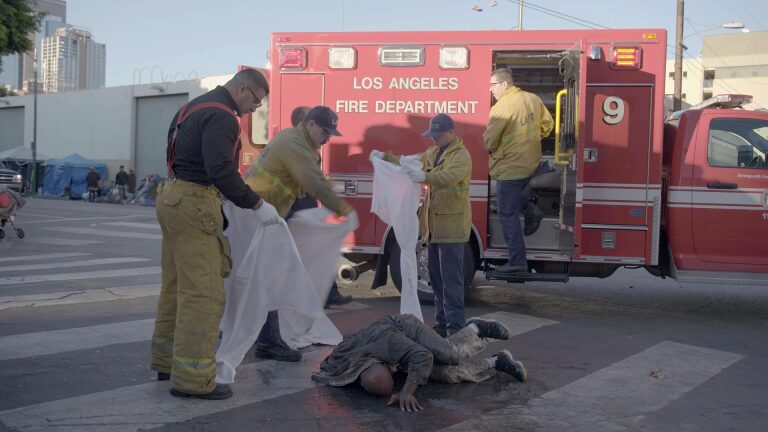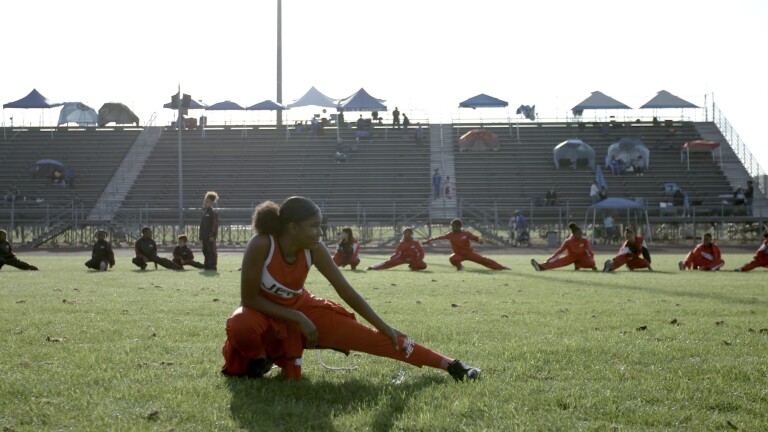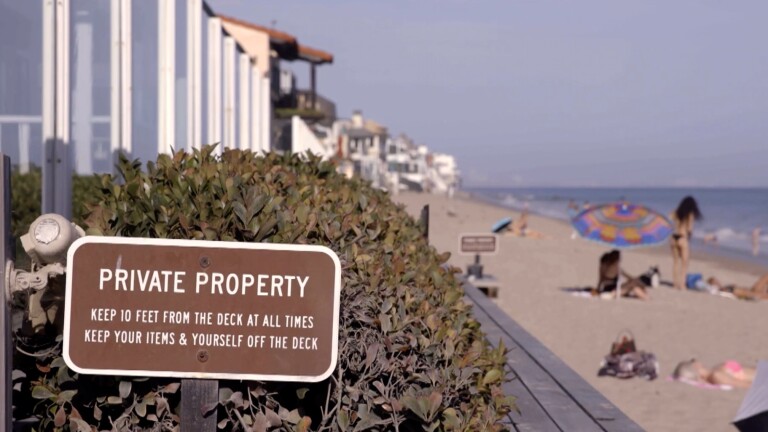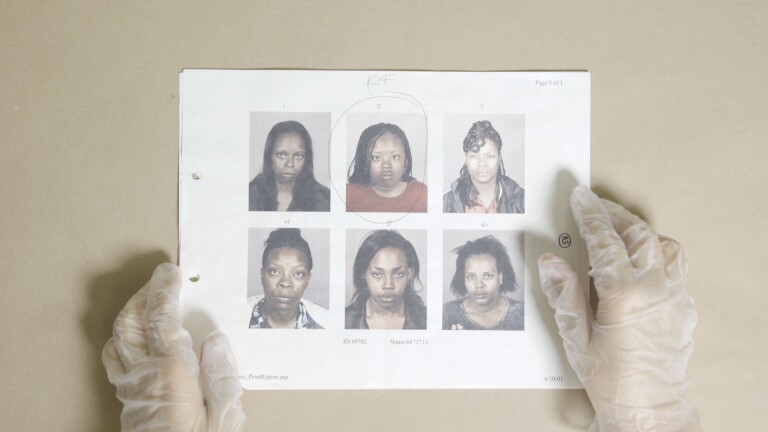
The Great Green Rush: Desert Solar Energy Leaving Tortoise in the Dust?
Special thanks to Stephen M. Wessells of USGS for use of the desert tortoise footage.
TRANSCRIPT:
Judy Muller: At first glance, the view along the interstate between Nevada and California might seem an odd place for a battle over protecting pristine desert habitat. Casinos and shopping outlets give way to towering transmission lines. This is the Ivanpah Valley, where a huge solar plant is under construction on public land.
Joe Desmond/BrightSource: When this is completed, this will actually be the largest solar-thermal project of its kind in the world.
Muller: These 3600 acres have been designated by the Bureau of Land Management as a Solar Energy Zone, an area with plenty of sun, easy access to transmission lines, and supposedly low environmental impacts. But as it turned out, this particular part of the Mojave Desert is prime habitat for a threatened species — the desert tortoise.
Dr. Michael Connor/Western Watersheds: Losing them would be a disaster for the desert. It's like, what's the point of saving the desert if you can't save this keystone species, one of the most recognizable species in the desert.
Muller: And it has a good image.
Connor: It has a great image.
Muller: The tortoise, as we all know from that old fable, is in the race for the long haul. It can live to be 80 years old, acting as the engineer of the desert, digging burrows used by other animals and aerating the soil. So, how did this threatened species get overlooked? Seems the federal government relied on an estimate provided by the solar company BrightSource, which initially counted only 25 tortoises on the property.
Muller: Is that bad science?
Larry LaPre/Bureau of Land Management Biologist: I would characterize it as "dirt science." It's inexact. You're looking for an animal that spends 90 percent of its time underground.
Muller: Once construction began, tortoises began popping up everywhere. The estimated number went from 25 to more than 150. Last April, the BLM ordered a halt to construction in two areas until BrightSource developed a plan to expand their protection of the tortoise.
Desmond: That involves a number of steps. Part One is moving them out of the areas where we'll be constructing, and then later, relocating them back into those areas or other areas that are approved and meet with the criteria that they need for proper habitat.
Muller: But for all those efforts, up to 1100 desert tortoises could be injured or killed because of construction or loss of habitat, according to the Department of Interior. Three have already died since construction began. Tortoises found on the site are being held in these pens. It's tight quarters for an animal known to roam up to 12 miles a day. All tortoises are watched over by a biologist hired by BrightSource. She admits to having mixed feelings.
Mercy Vaughn/BrightSource Biologist: It definitely generates some emotional turmoil, there's no question about that. However, there's no question that with what was discovered on this site after construction began, that BrightSource has done everything in their power to do the right thing for the tortoise.
Muller: That includes watching over the young hatchlings and then protecting them in the "head start" pen until they are predator proof.
Vaughn: So, to a point where their shell ossifies, and ravens and other avian predators are less likely to attack them.
Muller: That's why there's a net overhead.
Vaughn: And that's why there's a net overhead.
Muller: BrightSource now has 90 juvenile tortoises which will be kept here for five years. The adults, meanwhile, will be relocated this spring. But tortoises do not always take well to being moved. A recent effort to translocate tortoises from nearby Ft. Irwin resulted in a 50 percent mortality rate. But at least one environmental group would prefer to relocate BrightSource. Western Watersheds has filed suit in federal court to stop construction at Ivanpah.
Connor: The government cannot just go ahead, take our public land, and decide that they're going to put a commercial enterprise on it. Almost all the conscientious environmentalists that I know think that the Ivanpah project is in the wrong place.
Muller: But, in fact, this issue has split environmental groups because of conflicting priorities. On the one hand, you have the push to encourage renewable energy as part of the effort to battle climate change. On the other hand, there's the fight to protect endangered species in the desert. The question is, "How do you do both?"
Joan Taylor/Sierra Club: Well, I feel and the Sierra Club feels very strongly that we must ramp up solar and other forms of renewable energy. There's no question about it. And really anyone with half a brain could see this coming.
Muller: Joan Taylor, who heads the Club's regional desert committee, opposes the Ivanpah project because of its location — prime tortoise habitat. That has put her at odds, at times, with the Sierra Club National.
Taylor: I've never seen the Club so torn up over anything. So, I'm proud to say I think the Club has come over more to a protective stance for the desert, to advocating strongly for distributive renewables, that is, at load centers.
Muller: By "load centers," she means energy produced closer to where it's used, like Los Angeles. Michael Connor agrees.
Connor: Just get solar panels on everybody's roof.
Muller: Well, realistically, that's not going to happen. You think?
Connor: Okay, realistically, projects like BrightSource couldn't happen. The thing that made it happen was the fact that the government chipped in $1.6 billion in, you know, federal backing for this project. Put $1.6 billion into putting photovoltaic panels on people's roofs in Los Angeles. I'd be happy to take one.
Muller: This new gold rush, or "green rush," to get solar projects approved in the desert is spurred, in part, by a state mandate to have 33 percent of our energy come from renewable resources by the year 2020, but it's also spurred by money. Federal subsidies for solar projects have tripled in the last five years from $5 billion to $15 billion.
Taylor: There's no risk. In other words, there is a loan, but it's guaranteed by the government. There's no skin in the game. It's too good to be true.
Muller: The push for solar projects in the desert is not just financial, it's political. BrightSource's former chairman, John Bryson, was also the CEO of a utility involved in the Ivanpah deal. A well-known environmentalist, he was a fundraiser for President Obama and was recently appointed Commerce Secretary.
BLM employees often feel caught in the middle, much like they felt during the Bush years, when there was pressure to approve gas drilling on public land.
LaPre: Getting renewable energy is the global vision that the President has. And so, here we are carrying that out, and encountering obstacles along the way.
Muller: As if to underscore the political pressure, a representative of BrightSource arrived at the scene to observe our interview. She'd been alerted, in fact, by the BLM. Even so, BLM biologist LaPre spoke frankly. He said Ivanpah caught a break by being the first applicant for solar development on federal land.
LaPre: If it came later, there might not be a power plant here.
Muller: Why?
LaPre: Because it's productive desert, has the rare plants, it has those tortoises — the environmental mitigation is very costly. And the whole thing could have been built cheaper on a less-sensitive site.
Muller: LaPre worries as much about the rare plants as the tortoise. He took us on a tour of an area BrightSource has agreed to set aside to protect rare plants like the pincushion cactus and the barrel cactus.
LaPre: So there's, there's Mojave yucca plants out here that are easily 500 years old, some that are a thousand years old.
Muller: So we're looking at the desert equivalent of an old-growth forest, basically.
LaPre: Yes. A lot of the desert is that way.
Muller: BrightSource is going to dig a trench through a corner of this protected area for a natural gas pipeline, even though the original plan called for going around it. LaPre says the shortcut will actually disturb fewer plants than the original route, but he is still disturbed by the precedent.
LaPre: I think the less disturbance has a benefit, but it does create a swath in the middle of the protected area. They are going to...
Muller: So you have mixed feeling. I'm trying to figure?
LaPre: I have mixed feelings about that.
Muller: One person who does not have mixed feelings about BrightSource is Frazier Haney with Wildlands Conservancy.
Frazier Haney: We feel that solar development is necessary, but to destroy complex, pristine lands unnecessarily is unacceptable.
Muller: In an effort to preserve vital wildlife and recreation areas in the Mojave Desert, Haney's group raised $45 million back in the 90s to help purchase a thousand square miles of private land, and then donate the whole parcel to the federal government. It was the largest nonprofit land gift in American history, prompting a letter of gratitude from then-President Bill Clinton. Then, the green rush began, and the BLM decided to give part of that land to BrightSource and other energy companies for solar development.
Haney: We were absolutely outraged, absolutely outraged. That was many years of work on our part, and we felt that it was a gift to the American people and to the public trust. And it's not just Wildlands that should have been outraged. There were $18 million in land and water conservation funds, public monies that went into purchasing this land for conservation. And for that land to be turned around and allowed to be applied on for industrial private development just a few years later is shameful, really.
Muller: Senator Diane Feinstein put a stop to that development when she moved to make the area part of a proposed Mojave Trails National Monument, but the proposal is still pending in Congress. Back at Ivanpah, construction is on schedule. The plan is to create a huge circle of enormous mirrors called "heliostats," 66,000 of them that will concentrate the sunlight on a boiler tower 45 stories tall, where steam will be heated to drive a turbine. Eventually, three of these huge circles will produce enough wattage to power a city the size of Pasadena. Even so, its primary critics think its credentials as a green energy source are exaggerated.
Connor: It's not simply, you know, photovoltaic panels shining in the sun turning, you know, solar light into energy. It requires a gas pipeline to keep it going. This is a solar-thermal project. It's very much a power plant.
Muller: BrightSource says solar-thermal can generate a lot more energy than photovoltaics at a lower cost, and points out that no energy source is 100 percent green.
This plan actually uses 90 percent less water than more traditional concentrating solar power plants. In an area like the desert, that's really important. We use natural gas in the mornings so we can ramp up quickly and make the most of the sun when it comes up. So, the two work in tandem, but the amount of natural gas we actually use, we limit it to no more than 5 percent. So, taken as a whole, I'd say it's pretty clean.
Muller: Pretty clean unless you ask the tortoise. Whatever happens at Ivanpah, the battle is bound to continue. Twenty-six utility-scale solar projects are in the works for California's deserts, many in the Mojave. Meanwhile, a group made up of environmentalists, developers, and government officials is trying to finish the state's Desert Renewable Energy Conservation Plan or DRECP, basically a road map of the best places to establish solar developments.
Taylor: At least with the DRECP, the habitat plan, there will be some direction provided, some cover given, an incentive to do it the right way versus now which is free-for-all.
Muller: It's expected to be finished in about two years, the pace a tortoise would certainly understand. I'm Judy Muller for SoCal Connected.























